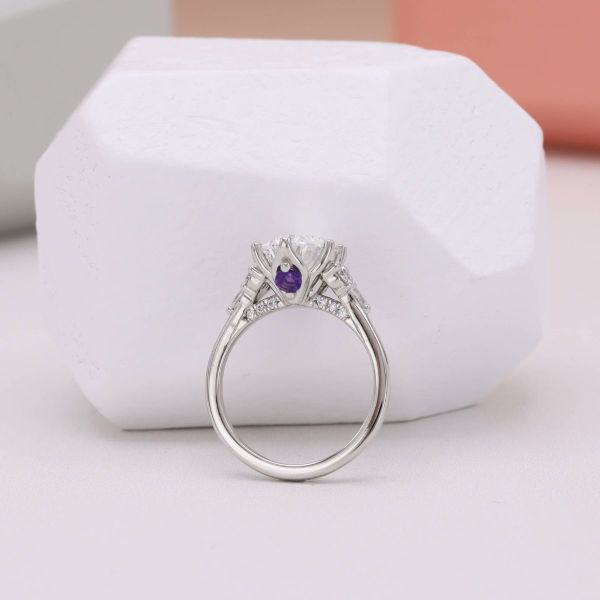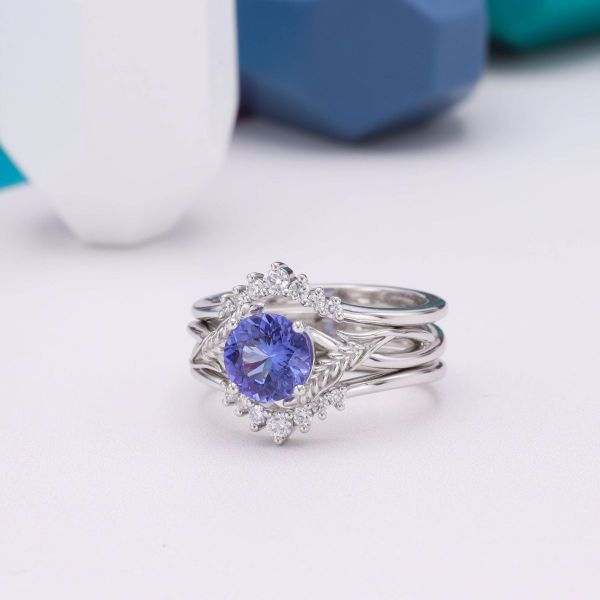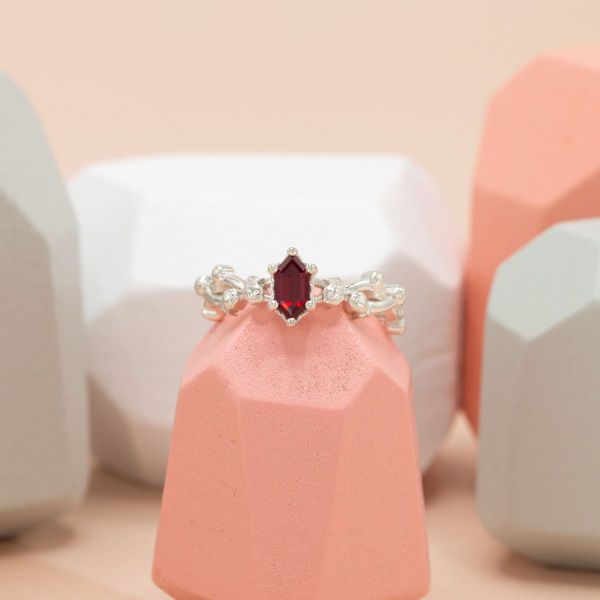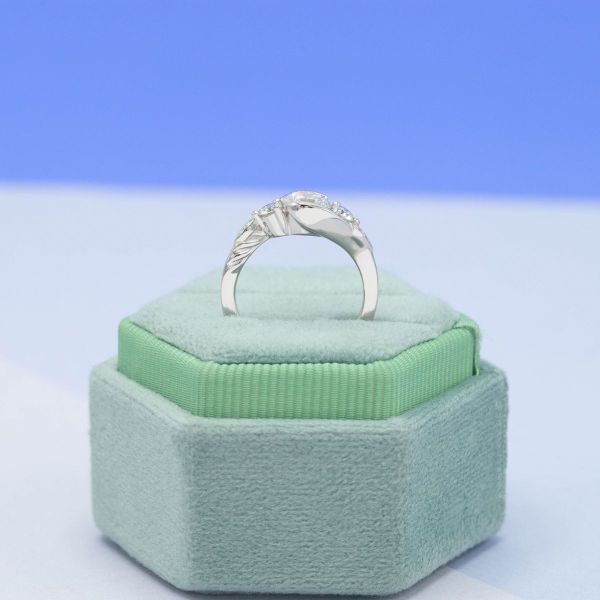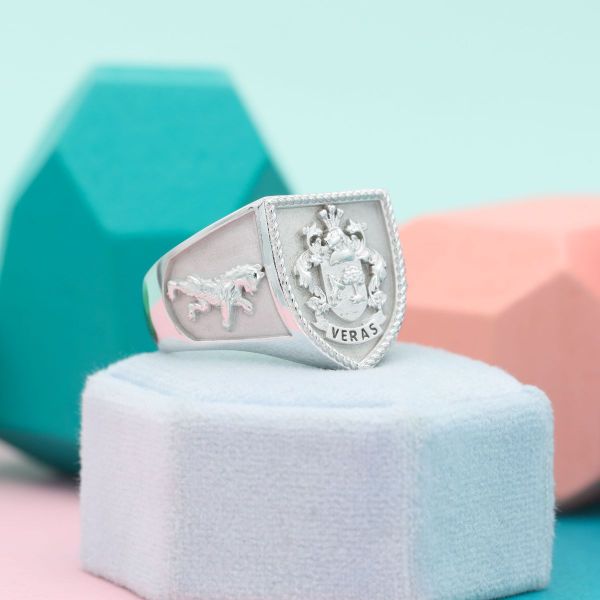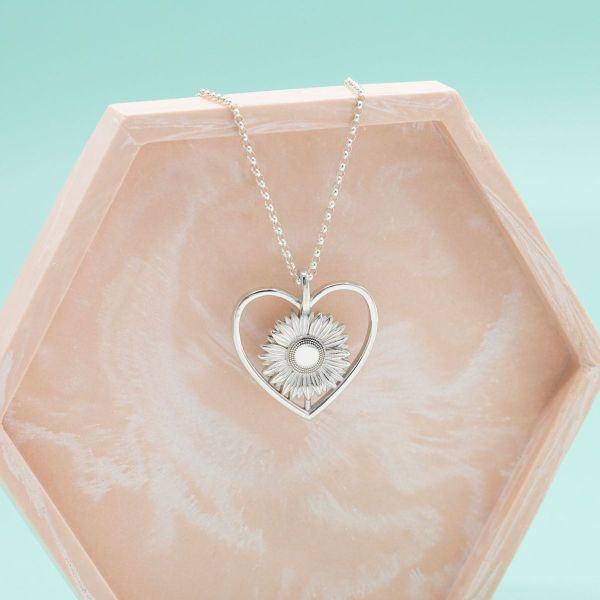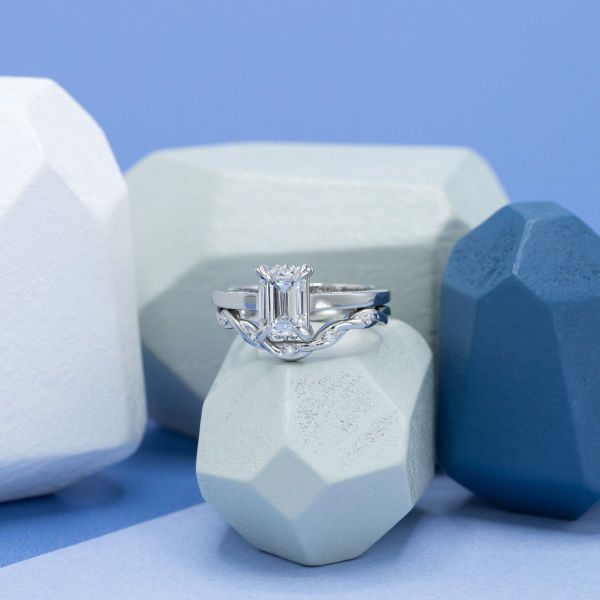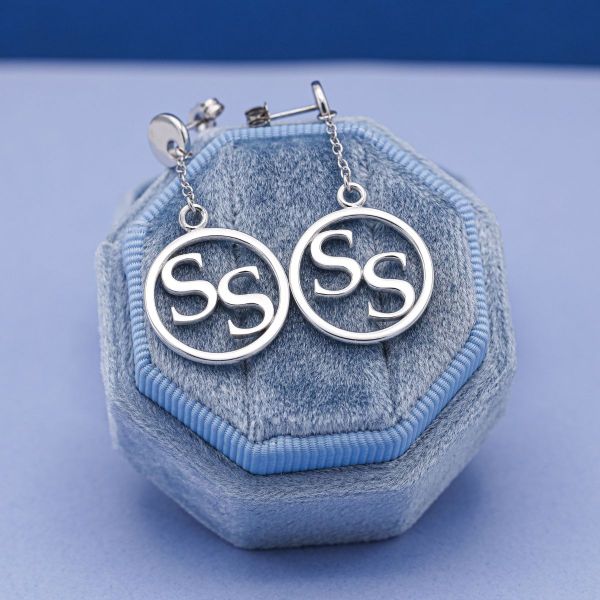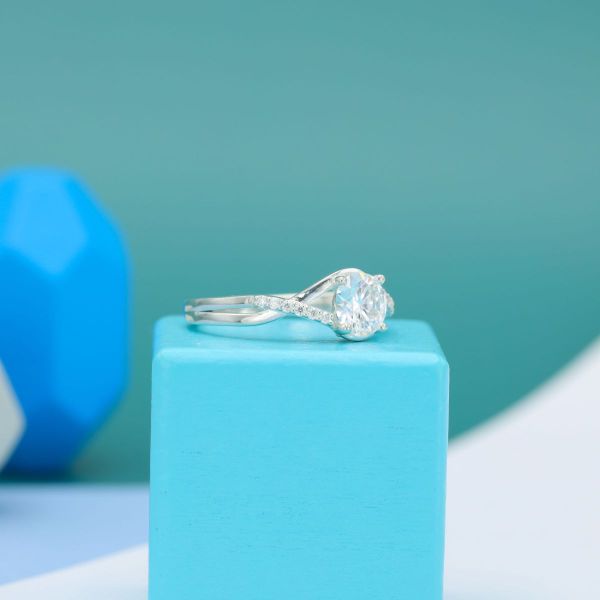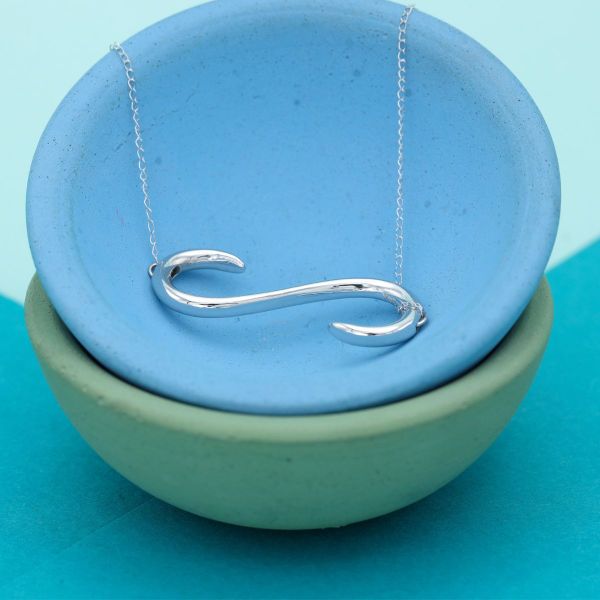Metal Knowledge
Which white metal is right for you?
A brief overview of the tradeoffs between silver, white gold, and platinum: which option is right for your custom piece?
Wondering about white metals?
There are some topics that always stir up healthy debate: chocolate or vanilla, cats or dogs, day or night, pineapple on pizza or sane human beings (we joke). But what about white metal? Are you smitten with silver, wild for white gold, or preoccupied with platinum? White metals are ideal for wearers who want a bright, neutral shine, with options at multiple price points. There are a few white metals to choose from, but which one is right for you? Let’s take a look at the three white metals we offer—platinum, white gold, and silver—and discuss some of the factors to consider when deciding which one is right for your own custom jewelry or engagement ring.
3 popular white metals used in jewelry
There’s actually a long list of white or silver-toned metals used in jewelry, but the three options we offer are the most popular across the industry. Platinum, white gold, and silver are top contenders for white metal choices, and each comes with its own set of benefits and considerations. But you know we’ve already got you covered—let’s dive into each!
Platinum
The most valuable option, platinum is a white metal known for its durability and weight. Rare and incredibly strong, it offers plenty of benefits for wearers looking for minimal maintenance and maximum durability.
Platinum is the most expensive option, containing a high amount of pure platinum for a higher price point. This bright white metal is tarnish-resistant, hypoallergenic, and very secure for prong-set gems, meaning it’s ideal for engagement and wedding rings that you want to last as long as your love: a lifetime. Platinum is also less likely to bend or break than other metals, so prongs made of platinum can defend your engagement ring stone from snagging, loosening, or falling out.
Over time, platinum does gather a finish called “patina”, the result of micro-scratches along the surface of the metal. This creates a softer, frosted finish that many platinum-loving folks actually prefer!
But if patina isn’t your thing, platinum can easily be restored to its former glory with a good polish. That’s because even when it’s scratched, platinum doesn’t lose any metal. While it might seem like a sneaky magic trick, the metal is just displaced to another part of the band when it’s scratched instead of flaking away and disappearing into the abyss. This means a professional polish can smooth everything back into place and make your ring look shiny and new. Abracadabra! It’s almost like having two different looks in one piece of jewelry!
White gold
If you’re looking for white shine and scratch resistance at a great value, white gold might be the right choice for you. Timeless white gold is often considered a happy medium between pricey platinum and high-maintenance silver (more on that soon). Here are a few handy facts about the differences between varying karats of white gold:
- In jewelry, pure gold is alloyed with other metals in different ratios to create different karat weights. We offer 10k white gold (10 parts gold to 14 parts other metals), 14k white gold (14 parts gold to 10 parts other metals), and 18k white gold (18 parts gold to 6 parts other metals).
- While all the white gold alloys we offer have great durability, 14k is slightly more durable. Why? It has the perfect balance of pure gold and other metals to make it more resistant to tarnishing and scratching.
- The higher the karat, the higher the cost! 18k costs slightly more than 14k, which is slightly more than 10k.
Wearers with nickel allergies may be interested in our white gold and palladium alloy, which is hypoallergenic and nickel-free. It also doesn’t need rhodium plating, as it’s naturally white!
In truth, white gold isn’t naturally as bright white as a celebrity’s smile, so it’s (almost) always rhodium plated to coat the yellowish gold alloy with a shiny white overlay. White gold jewelry requires a replating every 3 to 5 years as the golden tones underneath the rhodium begin to show over time. But don’t worry: this is an easy fix! You’ll just have to be willing to part with your ring for a short time while the work is completed by a professional jeweler (hint hint, we do offer this service for any jewelry you create with us!).
Rhodium is a bright white, scratch-resistant metal that is a valuable addition to the surface of your white gold jewelry. In fact, 95%+ of jewelers rhodium plate white gold pieces for enhanced durability and shine. Rhodium wears away slowly over the years, but it’s a mild change and your piece can be re-plated inexpensively for a like-new look!
Sterling silver
If you’re working within a stricter budget, sterling silver is another naturally white metal with a wallet-friendly price. It’s much softer than white gold and platinum and some wearers experience skin reactions to silver pieces, so we don’t typically recommend it unless it’s a must for your budget. That said, silver is a lovely jewelry metal that can last for decades if properly cared for, as long as you’re okay with a couple drawbacks:
- It’s prone to tarnishing, which means your ring will require proper storage and routine maintenance. You’ll definitely want a tarnish-resistant lined jewelry box or ring pouch for at-home care.
- Because it's a softer metal, it’s more prone to scratching and denting, so it may not be ideal for jewelry you want to wear daily.
- Its softness means it also offers a less secure hold for gemstones in jewelry, so you may end up with bent prongs or loose stones if you’re not careful (or even if you are!).
Of course, this isn’t meant to scare you away from sterling silver! It’s a stunning white metal that has many upsides for those wearers who can care for it. We just want to make sure you’re aware of all the considerations as you’re deciding which white metal is the best one for you.
Choosing the right white metal for your needs
Durability
For those of us less graceful wearers, durability can make a big difference! So, it’s important to pick a metal that can match your lifestyle. Overall, platinum is the strongest white metal, offering excellent durability for long-term wear. White gold is a close second, providing very good durability and excellent scratch resistance, and its hardness means prongs are secure and typically safe from major damage. Sterling silver won’t win any awards in the durability category—it might be fine for less expensive stones or occasional wear but is not ideal for diamonds, engagement rings, and daily jewelry. As a fairly soft metal, silver can’t offer quite the same protection as platinum and white gold.
Color
Each of these metals offers its own take on a “white” hue over time. When brand new and polished, all three metals look so similar that anyone who isn’t an expert likely wouldn’t be able to tell which is which! Over time, though, that’s where you might start to see some changes in appearance.
White gold is the brightest of the bunch, although it does require regular replating to look like new. Platinum maintains its grayish white hue through time, even as it begins to patina. Silver struggles to keep its gray-white shine, with black tarnish and scratches dulling its hue over the years without regular polishing.
Price
This is an easy one: platinum is the most expensive white metal on our list, while silver is definitely the most budget-friendly. White gold is squarely in the middle with a good balance of benefits and value!
Maintenance
These white metals require varying degrees of TLC with silver requiring the most maintenance: to prevent tarnishing, you’ll need to store it carefully away from other jewelry as well as chemicals, lotions, and the elements. It also wears more quickly than white gold or platinum, so scratching or losing a prong are more likely. White gold may lose more metal over time than platinum, but it does so very slowly and is more scratch resistant. It does require replating every 3 or so years–along with prong checks–to maintain that white shine. Platinum is the lowest maintenance white metal: an occasional professional polishing and prong checks (every 5 years or so) is all platinum needs to shine like new.
Weight
Platinum has a notably heavier feel than white gold, which is notably heavier than silver. This gives platinum a premium, sturdier feel, but it also isn't for everyone! Some folks might prefer a lighter ring, and so like Goldilocks with the three bears, it’s all about finding the one that’s just right for you.
Which white metal is best for you?
Platinum, white gold, and silver each offer a unique take on white metal, so hopefully you’ve started to get a sense of which one will best fit your own priorities. Sentimental pieces like engagement rings and wedding bands that require a durable metal for daily wear are better suited for sturdy options like platinum and white gold. On the other hand, if you’re looking for a budget-friendly option, silver works well with a little extra maintenance. It all comes down to price, durability, level of care, and the appeal you’re seeking for your jewelry piece. Don’t forget, our team is always ready and willing to walk you through which white metals might be best for the custom design of your dreams!
About CustomMade
CustomMade designs and creates one-of-a-kind, custom engagement rings and fine jewelry. Each piece we create is inspired by you, designed for you, and made just for you.
